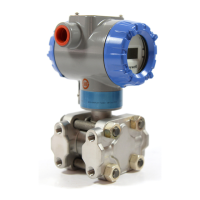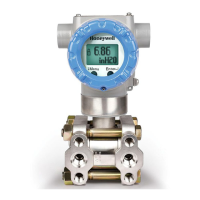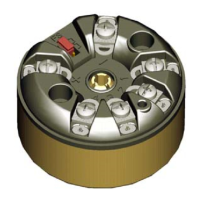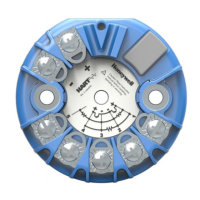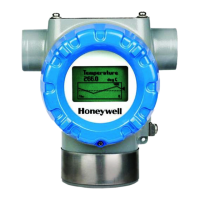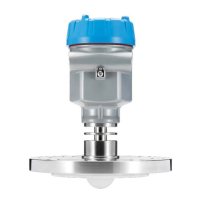Revision 10 ST 800 SmartLine Pressure Transmitters User’s Manual Page 3
1.3 ST 800 Transmitter Name Plate
The Transmitter nameplate mounted on the bottom of the electronics housing (see Figure 1) lists its
model number, physical configuration, electronics options, accessories, certifications, and
manufacturing specialties. Figure 3 is an example of a typical Gauge Pressure (GP) or Atmospheric
Pressure (AP) Transmitter name plate. The model number format consists of a Key Number with
several table selections. The Differential Pressure (DP), Absolute Pressure (AP), and Gauge Pressure
(GP) name plates are essentially the same. However, the DP provides one additional entry (7 vs. 6) in
the Meter Body Selections (Table I) to accommodate the static pressure rating.
Figure 3 –Typical ST 800 Name Plate
You can readily identify the series and basic Transmitter type from the third and fourth digits in the
key number. The letter in the third digit represents one of these basic transmitter types:
D = Differential Pressure
For a complete selection breakdown, refer to the appropriate Specification and Model Selection
Guide provided as a separate document.
1.4 Safety Certification Information
An “approvals” name plate is located on the bottom of the Electronics Assembly; see Figure 1 for
exact location. The approvals name plate contains information and service marks that disclose the
Transmitter compliance information. Refer to Appendix C of this document for safety certification
requirements and details.
1.5 Transmitter Adjustments
Zero and Span adjustments are possible in ST 800 SmartLine Pressure Transmitters with the optional
three-button assembly located at the top of the Electronic Housing (see Figure 2).
You can also use the Honeywell MC Toolkit or other third-party hand-held zero to make any
adjustments to an ST 800 SmartLine Pressure Transmitter. Alternately, certain adjustments can be
made through the Experion or Universal Station, if the Transmitter is digitally integrated with a
Honeywell Experion or TPS system.

